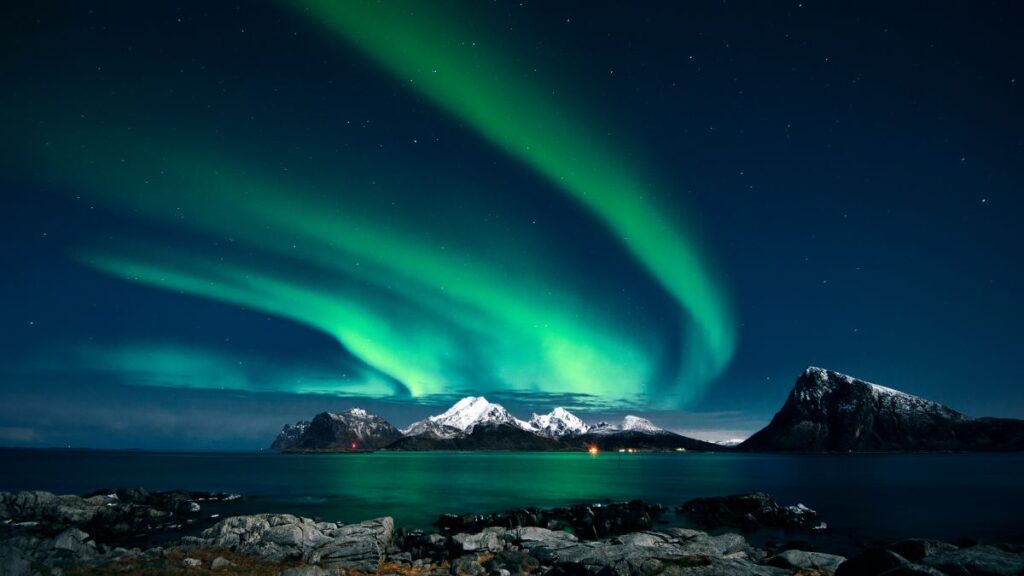A moderate G2-level geomagnetic storm is expected to brighten U.S. skies with the Northern Lights tonight, June 25, courtesy of a high-speed solar wind stream from a coronal hole, according to the National Oceanic and Atmospheric Administration (NOAA).
Why now?
NOAA’s Space Weather Prediction Center warns that the Kp index could peak at around 5.6–5.7, indicating strong geomagnetic activity that pushes the auroral oval further south than usual.
Where to look?

Following forecast maps and expert reports, auroras may be glimpsed, often as greenish or redish hues on the northern horizon in the following 14 states:
- Alaska
- Minnesota
- North Dakota
- Montana
- Maine
- Michigan
- Wisconsin
- Vermont
- New Hampshire
- Washington
- Oregon
- Idaho
- New York
- South Dakota
Best viewing tips:
- Head north-facing in dark, low-light areas such as rural zones or parks.
- Peak visibility is expected around 1 a.m. local time. Due to summer twilight, stay patient and alert.
- No telescope needed – though long-exposure smartphone cameras or DSLRs on a tripod can capture vibrant details.
Why this is rare:
We’re at the peak of Solar Cycle 25, described as a “solar maximum,” which raises solar flare, CME, and sunspot frequency – conditions ripe for auroras visible at unusually southern latitudes.
Quick Viewing Checklist:
Time: ~10 p.m.–2 a.m., peak at 1 a.m.
Location: Open sky, away from light pollution, facing north
Weather: Clear skies essential – check local forecasts
Gear: Nothing fancy – smartphone night mode or camera + tripod recommended
In Short:
A rare summer aurora event may gift skywatchers in 14 US states a chance to witness the Northern Lights tonight. Clear skies, dark locations, and a bit of cosmic patience might just deliver a breathtaking show.



